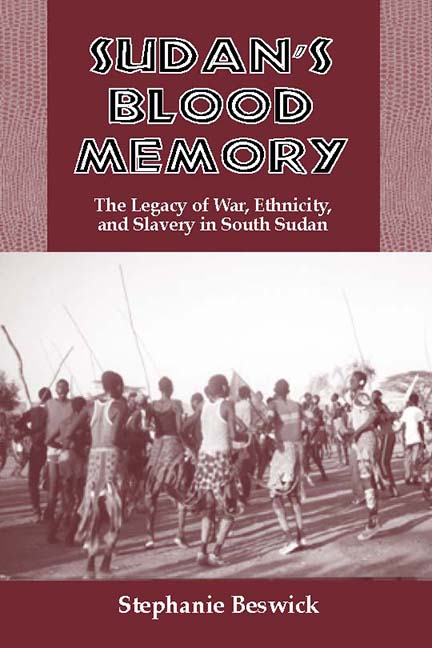Book contents
- Frontmatter
- Dedication
- Contents
- Maps
- Preface
- Acknowledgments
- A Note on Orthography and Languages
- A Note on Sources
- Map
- 1 Introduction
- 2 Geography and Brief History of Sudan
- 3 The Changing Nilotic Frontier
- The Ethno-Historical Formation of Southern Sudan
- The Ascendancy of the Dinka in Southern Sudan
- 9 Grain, Cattle, and Economic Power
- 10 Totemic Religion
- 11 Human Sacrifice, Virgins, and River Spirits
- 12 Priests, Politics, and Land
- 13 Ethnic Expansion by Marriage
- 14 Sovereign Nations within the Dinka
- Foreign Intrusion and Its Consequences
- Notes
- Glossary
- Bibliography
- Index
9 - Grain, Cattle, and Economic Power
from The Ascendancy of the Dinka in Southern Sudan
Published online by Cambridge University Press: 23 July 2019
- Frontmatter
- Dedication
- Contents
- Maps
- Preface
- Acknowledgments
- A Note on Orthography and Languages
- A Note on Sources
- Map
- 1 Introduction
- 2 Geography and Brief History of Sudan
- 3 The Changing Nilotic Frontier
- The Ethno-Historical Formation of Southern Sudan
- The Ascendancy of the Dinka in Southern Sudan
- 9 Grain, Cattle, and Economic Power
- 10 Totemic Religion
- 11 Human Sacrifice, Virgins, and River Spirits
- 12 Priests, Politics, and Land
- 13 Ethnic Expansion by Marriage
- 14 Sovereign Nations within the Dinka
- Foreign Intrusion and Its Consequences
- Notes
- Glossary
- Bibliography
- Index
Summary
“Land is very important to the Dinka; we slaughter gifts to our grandfathers and like to remain on the land of our ancestors.”
Rek Dinka Victor Majok Amecrot and Matthew Mathem DawThe greatest advantage possessed by the Dinka and their priests in their quest for geographical, religious, and political sovereignty in Southern Sudan was their economic advantage in the face of ecological turmoil. From the fourteenth to the seventeenth centuries much of the Sudan was subjected to intense periods of drought and famine. These weather patterns, perhaps more than any other factor, changed the course of history in the precolonial Southern Sudan. As the Dinka forged south into their new homelands they carried with them new strains of grain crops, or dhurra, known today as caudatum sorghum. It was not formerly grown in much of Southern Sudan but, nevertheless, grew well in certain harsh environments. They also possessed a hardy variety of cattle which were capable of long distance migrations and of surviving severe droughts, which also, as yet had not been introduced into Southern Sudan. Both of these items greatly facilitated Dinka migrations, allowing them to move into various points of the South in a relatively short period.
Caudatum Sorghum
The Dinka have often been viewed merely as pastoralists. Grain agriculture, however, has always been very important to their livelihood and economy. Caudatum Sorghum agriculture is related to Nilotic folk movements, and by the year 1000 it was already grown in many parts of Africa in the savanna belt, stretching from the eastern shores of Lake Chad to southwestern Ethiopia. Of importance here is that this type of grain agriculture is drought resistant and produces well with very little care. Its limitation is that once used to a particular soil, the seeds of the grain do not travel well.
During their migrations into Southern Sudan the forefathers of the Dinka first settled in those territories whose soils were similar to their previous homelands in the Gezira and were thus also favorable to their crops. They specifically sought land rich in alluvial and lacustrine soils. Over time, they came to permanently reside in the region surrounding the vast Southern Sudanese swamp, one of the world's largest. Known today as the Sudd, it is located in the central heartlands of Southern Sudan.
- Type
- Chapter
- Information
- Sudan's Blood Memory , pp. 91 - 97Publisher: Boydell & BrewerPrint publication year: 2004

